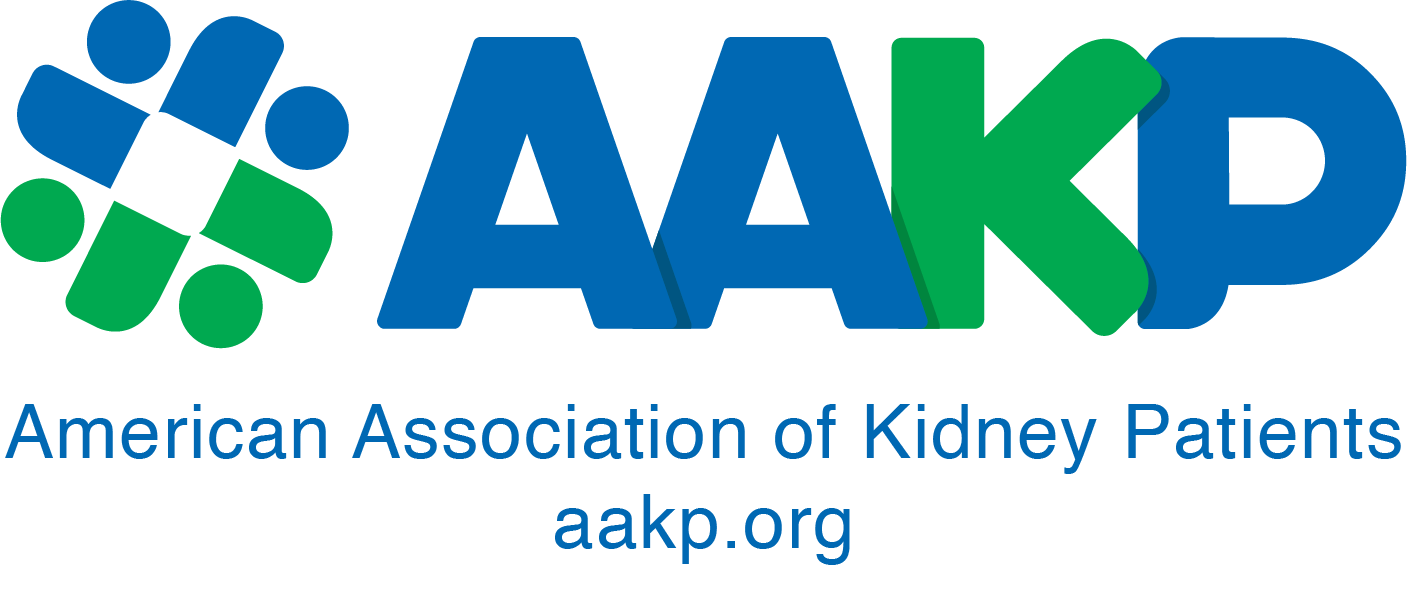November 13, 2020
Nakela Cook, MD, MPH
Executive Director
Patient-Centered Outcomes Research Institute
1828 L Street NW, Suite 900
Washington, DC 20036
Dear Dr. Cook:
We are writing to comment on PCORI’s Proposed Principles for the Consideration of the Full Range of Outcomes Data. We applaud PCORI for the thoughtful recognition of its authorizing statute’s limitations that prohibit PCORI from engaging in cost effectiveness analysis, which was included in the statute to protect beneficiaries from harmful and restrictive coverage decisions that treat patients and people with disabilities as averages. We could not agree more that ensuring patients and their caregivers have access to credible, evidence-based information helps them make healthcare choices that are more relevant and useful to them. This is the essence of what makes PCORI different – a clear mission to improve health care decisions and thereby improve care quality while mitigating and lowering costs that emanate from patients not getting the right care at the right time.
Within our comments, we want to emphasize the following key recommendations:
• Promote usability of collected information for decision-making, including patients with multiple chronic conditions and their caregivers;
• Contextualize the cost information being communicated to ensure it is not used against patients and providers;
• Solicit and appoint new Methodology Committee members who have appropriate expertise in the collection and communication of patient-level data.
he Partnership to Improve Patient Care (PIPC) and the undersigned organizations representing patients, people with disabilities, caregivers, providers, researchers and other stakeholders continue to support comparative clinical effectiveness research that informs patient and caregiver decision-making and is not used in a way that may lead to restricted coverage or access to health care interventions. Throughout PCORI’s statutory language, the effectiveness of treatments for subpopulations is emphasized in an effort to ensure studies do not treat people as averages, and thereby exacerbate existing health inequities for certain racial and ethnic communities and people with disabilities. People with chronic and disabling conditions, especially within certain racial and ethnic communities, strongly support the PCORI statute’s ban on using discriminatory metrics such as quality-adjusted life years (QALYs) that are too often used by value assessment organizations to justify restrictive coverage of items and services. We appreciate that PCORI recognizes the statute’s limitations.
The information collected by PCORI on the burden of disease, both economic and otherwise, has the potential to provide invaluable information about the experience of patients within vulnerable subpopulations, whether based on race and ethnicity, social determinants of health, income, disability, gender or sexual orientation. We would encourage public reporting of information within subpopulations about the burdens they experience and the outcomes they value that may not be included in the typical medical model of research and that could provide invaluable insights for all stakeholders seeking to improve health care. As PCORI recognized, this is an opportunity to assess impacts from a patient perspective in a systematic way. It is also an opportunity to support efforts led and supported by patients to assess the value of treatments in a manner that does not discriminate.
PCORI provided examples of how information on both economic and non-costs could be used such as to better organize healthcare or clinical workflows, to supports employer determinations about what options best address workplace productivity and absenteeism, to assist a clinic’s decision on the best way to meet patient’s health needs or to help policymakers make more informed decisions about health care services. Within all of these examples, we hope that PCORI will provide guidance to researchers that the ultimate goal of collecting this data is, first and foremost, to improve patient and caregiver decision making and care, meaning information should be collected and communicated in a manner that is usable to achieve that goal. PCORI should be clear that the collection of this data is not intended to support restricted coverage of items and services for people with disabilities and chronic conditions that may need them. As PIPC Chairman Tony Coelho often says, “No patient is average.”
Principle #1: PCORI-funded research may consider the full range of outcomes important to patients and caregivers, including burdens and economic impacts.
It is essential to the usability of research that patients remain engaged in PCORI-funded studies as partners who help determine what to study and how. We could not agree more that patient engagement will be critical in understanding how to capture the costs and burdens that are relevant to them. The factors captured by PCORI as potential burdens and economic impacts are a good start, but we would encourage PCORI to systematically capture patient preference information specifically relevant to the research topic noting differences among subpopulations as the basis for choosing the data points to be captured within its expanded mandate to collect cost/economic information. In the real world, the outcomes that matter to patients often vary by disease, disability, condition (or those with multiple chronic conditions), and by socioeconomic factors. As part of PCORI’s efforts to consider the full range of outcomes important to patients, PCORI has an opportunity to teach the research community how patient preference information can be relevant and usable to improve their studies, and similarly to inform payers and policymakers about the outcomes that matter to patients that should be considered when they are making decisions that have implications for how patients access care.
Therefore, we would urge PCORI to work with stakeholders to identify methodologies for gathering patient preference information that represent consensus among them for being relevant and as rigorous as possible. The goal should be to identify relevant and reliable patient preference information that researchers could reference in determining the outcomes data they intend to capture in their projects. By extension, this information about patient preferences could be used by other stakeholders as they seek to improve decision-making and quality measures.
Additionally, the collection of cost data must be sensitive to the differential costs that are borne by patients and caregivers based on their insurance coverage, geography, etc. It is essential that the economic data collected and shared through PCORI-funded research be communicated in a manner that recognizes this differentiation. Researchers should be sensitive to the limitations of the data being collected and avoid interpreting this information into “averages” or assumptions that the information collected represents all patients. Where the research population has a homogeneous characteristic that may not represent a heterogenous patient population, it should be noted as a limitation of the data collected.
Principle #2: PCORI-funded research may consider the full range of outcomes relevant to other stakeholders, when these outcomes have a near-term or longer-term impact on patients.
We agree with PCORI that different stakeholders will use different types of analysis, such as return on investment (ROI), to inform their decisions and they will draw on information regarding patient burden and economic impact in a variety of ways. This is one reason it is essential for PCORI to communicate the data alongside its limitations so that it is not assumed to represent patient populations that may not have been represented in the research project, including those with multiple chronic conditions. It is important that other stakeholders understand how outcomes important to patients may vary by subpopulation to avoid its consideration in the average and in a manner that may discriminate against those falling outside averages. While it is important to collect outcomes relevant to non-patient stakeholders, PCORI’s primary focus should be on collecting outcomes prioritized by patients and their caregivers. It is essential that the data collected by PCORI provide a full understanding of the value of incremental health improvements that are too often not captured by a traditional value assessment.
For example, a traditional comparative effectiveness research (CER) study may not capture the value of a patient’s ability to simply sit up in bed or roll over independently, which has tremendous benefit to the patient and caregiver, but may be perceived by payers as not being worth the added cost for their own ROI. PCORI’s mandate to conduct comparative clinical effectiveness research, as opposed to traditional CER or cost effectiveness analyses, is intended to avoid this outcome. In considering outcomes relevant to “other stakeholders,” PCORI should be clear in its instructions to researchers that all economic outcomes must be developed in collaboration with their patient and caregiver partners in the research project.
Principle #3: The collection of data on burdens and economic impacts of treatment options must be appropriate and relevant to the clinical aims of the study.
We also understand that stakeholders other than patients, caregivers and people with disabilities may be seeking information on outcomes that are not captured by patient preference information and input from patients or caregivers on the burdens they experience and their implications. It will be important to ensure that the outcomes being captured by the research are demonstrated to have a near-term or long-term impact on patients that patients and their caregivers would agree to be important. For example, a payer would want to collect information on comparative medical care costs as they seek to make coverage decisions that drive patients to low-cost alternatives. In some cases, the low-cost alternative is not the alternative that achieves outcomes that matter to patients. For example, inpatient care may achieve better outcomes for the patient, but will cost more than an outpatient alternative. Additionally, a new innovative treatment may cost more than the previous standard of care. It is vital that the information generated from a PCORI study be clear in its goal of being used to support high quality shared decision-making and innovative models for assessing the value of treatments that go beyond the traditional cost-per-quality-adjusted life year (QALY). Therefore, we urge PCORI to take steps to ensure the methodology for collecting and communicating this data explicitly take into consideration that it should support innovative and patient-centered models for improving patient care, and not used by health care decision makers to restrict patient access.
In its measurement of the relative costs of care of two or more alternative approaches within the context of CER, it will be difficult to prevent its misuse by downstream users that are seeking to lower their immediate medical costs. We are relieved that PCORI does not intend to fund studies for which cost and economic impacts are the primary outcome, but urge PCORI to also take steps to contextualize the cost information being communicated to ensure it is not used against patients for whom a more expensive care option may also be the most effective in achieving the outcomes that matter to them. Unfortunately, traditional CER and cost effectiveness analyses often leads to broad restrictions on coverage that include restrictions on the subpopulations for whom a treatment is most valuable. Context will be very important to avoid this outcome.
Principle #4: Beyond the collection of burden and economic impact data, PCORI may support the conduct of certain types of economic analyses as part of a funded research study, to enhance the relevance and value of this information to health care decision-makers.
We appreciate and support PCORI’s commitment that its funded studies do not aggregate findings on health outcomes with findings on economic impacts – as in a cost-effectiveness ratio. We strongly agree such studies should not be designed in such a way as to inform resource allocation decisions by aggregating and summarizing comparisons between alternative interventions. We also recognize that data gathered in a manner that recognizes heterogeneity among patients could be useful to a learning health system that seeks to determine what works for whom and when.
We believe that analysis of newly collected economic and burden information representing outcomes that matter to patients, if in alignment with PCORI’s prohibition against conducting CEA, would be useful in decision-making if it allowed for stratifying the impact of the compared items or services based on the measured outcomes – similar to the manner in which multi-criteria decision analysis (MCDA) allows for a more individualized assessment of treatment choices. For example, communicating information in a manner that allows it to be stratified according to the individual’s preferences or the characteristics of a subpopulation would thereby discourage its use in a manner that treats everyone as an average. Subpopulations or individuals that fall outside the average could appeal decisions made relying on one component of the data that was not representative of that subpopulation or individual’s needs, preferences or outcomes. And payers and other decision-makers could make more accurate judgements as to the value of treatments for their covered beneficiaries based on differential factors that influence patient preferences and priorities.
While PCORI provided examples of specific analyses that may benefit stakeholders, it will not be simple to aggregate costs of medical items and services due to the vast differences in costs associated with care based on factors such as insurance or lack thereof and geography. That being said, it is useful to collect data on specific utilization, such as inpatient versus outpatient days and the comprehensive components of an intervention including burdens such as transportation and caregiving that are not systematically reported currently. With the components of burden posed by an intervention accurately described, including the items that impose costs and burdens borne by patients and caregivers – in addition to those within the medical model of healthcare that are typically captured in the comparative clinical effectiveness research study – the information would support an economic analysis that accurately describes how those costs translate to an impacted person with a certain insurance, without insurance, in certain geographies, etc. But the point is that the associated dollar costs will differ, perhaps dramatically, among patients. Researchers could provide information on the quantity or volume of the burden, such as the hours of caregiving, child care, missed work, and effect(s) on comorbid conditions that could be expected based on the intervention provided. PCORI-funded researchers may be challenged in analyzing dollars associated with the burden as it is a distinguishable expertise. Yet, such researchers could follow the direction of PCORI’s Methodology Committee to calculate the quantify of the personal costs and burdens, such as hours spent caregiving, missed work and transportation, that would give downstream analysts or individual patients the ability to translate the burden into costs that accurately represent the specific population or individual being treated. Innovative analysts could sensitively translate such information into high quality shared decision-making tools or advanced models for value assessment that go beyond the QALY, such as multi-criteria decision analysis.
Additionally, we agree that capturing the components that may induce a cost or burden in the future would be useful. Those could include opportunity costs of choosing one treatment over another, risk of future disability from treatment, extended caregiving needs, etc. By capturing these possible future burdens, a patient or other decision-maker is in a better position to assess how those potential burdens affect their own calculation of benefits and harms among their treatment choices.
There can and should be a role for PCORI’s Methodology Committee in developing standards for PCORI researchers tasked with capturing these important data points. We would encourage PCORI’s Board of Governors to solicit nominees for the Methodology Committee that have experience with collecting patient preference information, translating data into high quality shared decision-making tools and patient-centered quality measures, and innovative methods for value assessment of items and services. What PCORI has been tasked to do represents innovation and people who have been involved in driving innovation should be represented on the Methodology Committee. We would recommend looking to the community of organizations that have experience with patient registries, patient groups that have been the driving force behind improvements in quality measurement and innovative value assessment strategies, as well as entities with experience in models such as MCDA. These would be the individuals that understand how patient-level data is translated into data that is usable for improving health decisions.
In conclusion, we urge PCORI to work closely with stakeholders, particularly patients impacted by the research, to determine the additional outcomes that will be collected under the new statutory provisions. We also urge PCORI to make publicly available which outcomes and analyses will be considered in future research. PCORI should be sensitive to the differential costs imposed by the burdens that become apparent once collected, as they may differ based on many factors and should be communicated with sensitivity to those differences. Finally, we urge PCORI to ensure that new Methodology Committee members are appointed who have appropriate expertise in the collection and communication of patient-level data, including patient preference information, and its translation into high quality shared decision-making tools and innovative methods for assessing treatment value.
Thank you for all the work you have done thus far to ensure that patients and people with disabilities have a voice in your work to define a process for research teams to collect a full range of outcomes data. We look forward to learning more about your plans for implementing this important provision of your authorizing statute. Please reach out to Sara van Geertruyden (sara@pipcpatients.org) with any questions.
Sincerely,
American Association of Neurological Surgeons
Alliance for Aging Research
American Association of Kidney Patients
American Autoimmune Related Diseases Association, Inc.
Association of University Centers on Disabilities (AUCD)
Asthma and Allergy Foundation of America
Autoimmune & Autoinflammatory Arthritis
Beyond Type 1
BioNJ
Brain Injury Association of America
Bridge the Gap – SYNGAP Education and Research Foundation
CancerCare
Center for Autism and Related Disorders
CFRI – Cystic Fibrosis Research, Inc.
Congress of Neurological Surgeons
COPD Foundation
Cure SMA
Diabetes Leadership Council
Diabetes Patient Advocacy Coalition (DPAC)
Epilepsy Foundation
Epilepsy Foundation New England
EveryLife Foundation for Rare Diseases
Family to Family Health Information Center of Washington Global Liver Institute
GO2 Foundation for Lung Cancer
Health Hats
Huntington’s Disease Society of America
ICAN, International Cancer Advocacy Network
Infusion Access Foundation (IAF)
James Meyers
Lupus and Allied Diseases Association, Inc.
MLD Foundation
National Alliance for Hispanic Health
National Alliance on Mental Illness
National Infusion Center Association
Not Dead Yet
NTM Info & Research
Partnership to Fight Chronic Disease (PFCD)
Partnership to Improve Patient Care
The Bonnell Foundation
The Coelho Center for Disability Law, Policy & Innovation The Headache and Migraine Policy Forum
United Cerebral Palsy
VHL Alliance
























